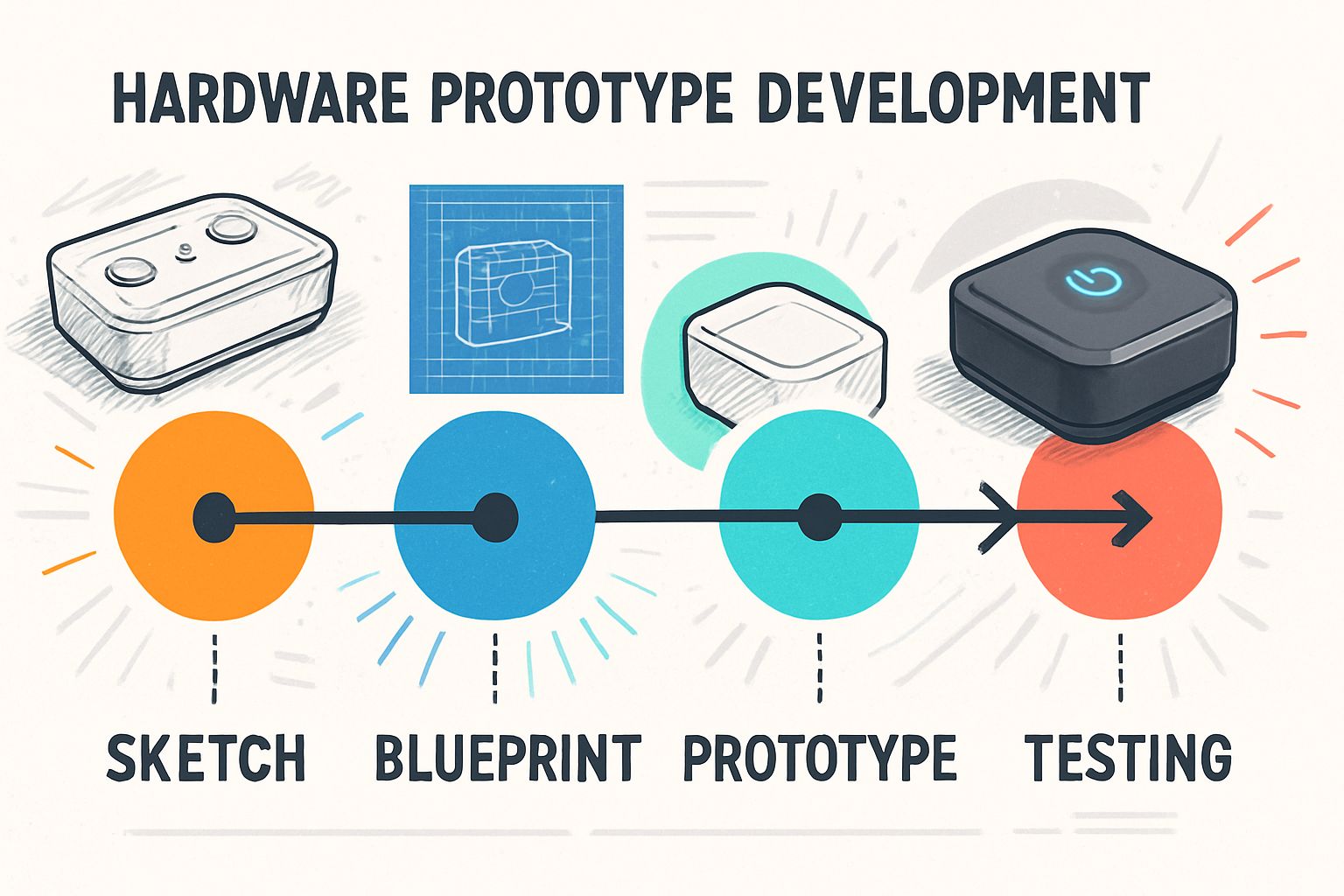
AI CERTS
24 hours ago
OpenAI Hardware Prototype: Timeline, Design, Market Outlook

This article traces the venture’s roots, evaluates the Screenless Device concept, and clarifies the current Launch Timeline. Consequently, leaders can separate hype from reality before placing billion-dollar bets.
Few projects have generated similar cross-disciplinary buzz since the original iPhone reveal. In contrast, today’s competitive landscape includes unproven AI gadgets that have stumbled commercially.
Therefore, understanding OpenAI’s strategy provides a crucial benchmark for the broader market. Meanwhile, regulators and privacy advocates watch closely as always-on sensors move beyond smartphones.
Acquisition Sparks New Chapter
OpenAI announced the io acquisition on 21 May 2025 for roughly $6.5 billion, entirely in stock. Furthermore, the deal folded about 55 hardware and design specialists into the research giant.
Jony Ive retained creative independence through LoveFrom while accepting a deeper operational role. Consequently, OpenAI gained end-to-end industrial design expertise for its early Hardware Prototype roadmap.
Analysts compared the purchase to Apple’s NeXT buyout, citing potential platform transformation. However, skeptics noted that consumer electronics margins differ sharply from cloud-software economics.
Altman reportedly told employees the project could add $1 trillion in value, a claim yet unverified. The acquisition undeniably raised stakes across the organization.
Meanwhile, attention soon shifted to visible prototypes, the next logical proof point.
Prototype Milestone Publicly Announced
On 24 November 2025, Sam Altman and Jony Ive took the Emerson Collective stage. Moreover, Altman exclaimed, “Finally, we have the first prototypes,” drawing applause from investors and founders.
He called the initial Hardware Prototype “simple, beautiful, and playful,” echoing early iPod narratives. Jony Ive added that the Screenless Device could pass a whimsical “lick test,” signaling tactile charm.
Journalists pressed for demos, yet OpenAI limited access to private viewing rooms without cameras. Consequently, leaks surfaced describing a pebble-sized unit that relies on voice, gesture, and contextual sensors.
The company refrained from confirming specifications, emphasizing that each Hardware Prototype iteration remains fluid. Public confirmation of working units nonetheless changed the narrative from concept to execution.
Therefore, observers recalibrated launch forecasts, a topic explored next.
Launch Timeline Expectations Evolve
Early internal chatter hinted at a 2026 release targeting massive volume. However, the November statement shifted guidance to “less than two years,” placing the Launch Timeline between late 2026 and 2027.
Such flexibility reflects typical hardware cycles, where certification, tooling, and supply chain validation often slip. Moreover, the IYO trademark dispute forced temporary rebranding, adding schedule friction.
Investors therefore await a demonstrable Hardware Prototype ready for regulatory labs.
OpenAI insiders still reference the ambitious 100 million-unit goal, yet concede that staged rollouts may occur. Meanwhile, suppliers in Taiwan and Vietnam reportedly await volume forecasts before reserving factory lines.
Consequently, the official Launch Timeline will firm up only after engineering validation builds complete. Scheduling uncertainty keeps investors attentive yet patient.
Next, we examine how design philosophy intersects with those logistical realities.
Design Vision And Challenges
Sir Jony Ive champions solutions that appear deceptively simple while hiding complex engineering. Furthermore, the team pursues a Screenless Device ethos to reduce digital fatigue.
In contrast, recent AI wearables struggled because users lacked clear value without screens. Therefore, Ive’s obsession with ergonomics and material science may prove decisive.
OpenAI must also balance privacy by enabling on-device inference whenever feasible. Moreover, the design team references Apple’s secure enclave model as inspiration.
Professionals can enhance their expertise with the AI Prompt Engineer™ certification. Consequently, trained staff will interpret AI-hardware integration issues more effectively.
Engineers iterate each Hardware Prototype with tactile feedback sessions inside a sealed lab. The vision presents bold possibilities alongside intricate technical puzzles.
Subsequently, commercial viability becomes the central question.
Market Ambition Versus Reality
Company projections mention staggering unit volumes and trillion-dollar value creation. However, history cautions that hardware scaling remains brutal even for giants.
Humane and Rabbit shipped far fewer than planned, despite influential backers.
- Acquisition cost: $6.5 billion all-stock
- io staff integrated: ~55 employees
- Target volume: 100 million units (internal goal)
- Public launch window: under two years
Moreover, supply chains may prioritize established phone orders before experimental categories. Therefore, the initial Hardware Prototype batch could be limited, affecting buzz and margins.
These numbers illustrate both excitement and exposure. Consequently, risk management drives the next phase of planning.
Risks And Legal Hurdles
The IYO trademark suit offered an early glimpse of branding complexity. Additionally, privacy regulators may scrutinize always-listening microphones under evolving AI policies.
Supply shocks, component shortages, or geopolitical tensions could escalate costs quickly. Nevertheless, OpenAI’s cash reserves and partner network provide mitigation levers.
Executives already engage compliance teams during every Hardware Prototype sprint to pre-empt delays. Furthermore, design alterations can avoid contested marks should courtroom outcomes sour.
Robust governance lowers the probability of catastrophic hold-ups. Still, stakeholders must track signs of slippage, as the following section advises.
Next Steps For Stakeholders
Investors should monitor supplier contract filings and upcoming FCC certifications. Meanwhile, developers can request early SDK access to align services with the Screenless Device paradigm.
Product managers ought to map scenarios where a discreet assistant outperforms smartphones. Additionally, enterprises may pilot internal prototypes to validate workplace voice workflows.
Professionals seeking a competitive edge should pursue the linked certification to master prompt design for ambient hardware. Early access to a Hardware Prototype will reveal unexplored enterprise workflows.
Proactive engagement converts uncertainty into strategic advantage. Finally, we summarize the journey and outline a clear call to action.
OpenAI and Jony Ive have advanced from visionary sketches to tangible silicon within eighteen months. Consequently, the first Hardware Prototype now anchors a broader strategy to own ambient computing.
However, commercial success depends on supply stability, privacy assurance, and clear everyday utility. Market history warns that pioneering devices rarely reach scale without iterative tuning.
Therefore, leaders tracking the Launch Timeline should couple optimism with disciplined oversight. Engage early, skill up, and revisit metrics quarterly to capitalize on any paradigm shift.



